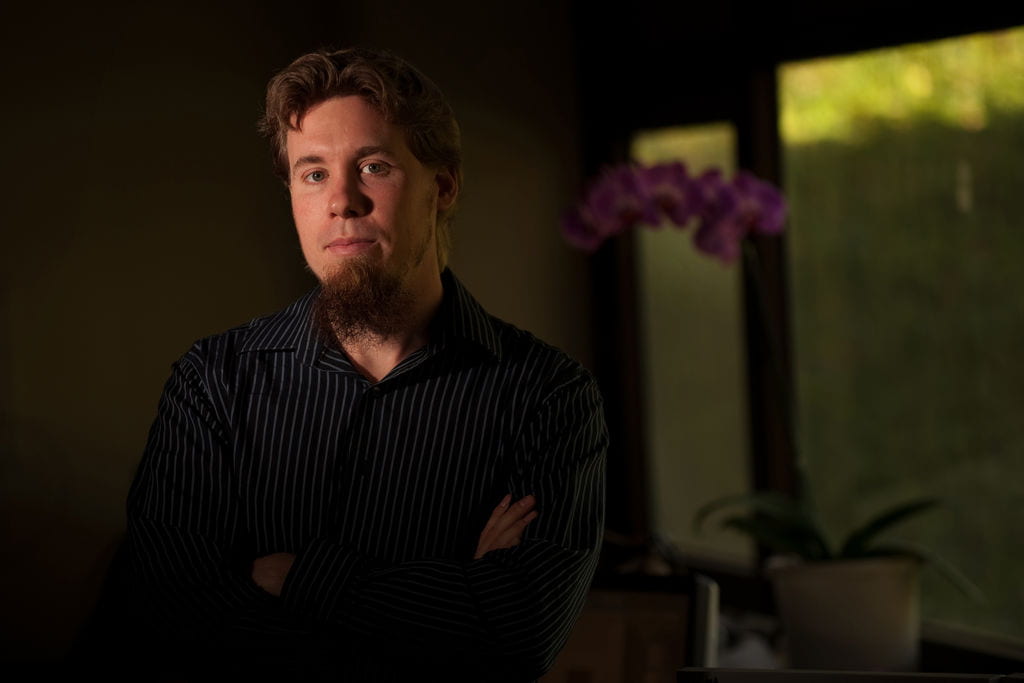Visualizing victory over breast cancer
Dual-energy mammography is the latest imaging technique pioneered by UCI researchers to battle the deadly disease.

As UC Irvine oncologists with the Chao Family Comprehensive Cancer Center continue to make strides in the fight against breast cancer, other promising advances are being made on campus with new approaches to imaging technology. A medical physics research group in UCI’s School of Medicine is exploring a novel use of mammography to more precisely identify women who may be at increased risk of breast tumors.
Justin Ducote and Huy Le in the lab of radiological sciences and biomedical engineering professor Sabee Molloi found that taking mammography images of a breast at different energy levels can be used to measure breast tissue density – which is the ratio of glandular content relative to the total amount of glandular and fat tissue. This is important because women with dense breast tissue are four to five times more likely to develop tumors.
The study is funded by a four-year National Institutes of Health grant to Molloi. Dr. Stephen Feig, director of breast imaging in UCI’s Breast Health Center, is collaborating with the project.
“Researchers have known for more than 30 years that women with dense breast tissue are at greater cancer risk,” says Ducote, who received a Public Impact Fellowship from UCI’s Graduate Division for his work. “Measuring density is made difficult by the fact that there is no currently accepted ‘gold standard’ for doing so.”
In July, he and Le presented data from this research project at the annual meeting of the American Association of Physicists in Medicine and got unanimously positive feedback. If the dual-energy imaging technique continues to produce good results in larger-scale tests, it could become a routine adjunct to traditional mammography.
The research group’s work is not the only promising use of imaging technology for breast cancer. In January, researchers led by Bruce Tromberg, director of UCI’s Beckman Laser Institute, reported that a laser breast scanner they had invented could accurately distinguish between malignant and benign growths, offering an easy, noninvasive way to tell which warrant aggressive treatment.
In addition, the UCI laser breast scanner is proving beneficial in evaluating the effectiveness of chemotherapy by supplying detailed data on changes in breast tumor metabolism during treatments. This information, which can be accessed quickly at bedside, lets oncologists tailor chemotherapy based on how patients respond.
“The use of chemotherapy for tumor reduction before surgery is important with certain types of breast cancer,” says UCI surgical oncologist Dr. John Butler. “The metabolic fingerprint the scanner provides indicates how the chemotherapy is working and allows doctors to adjust treatments.”
Breakthroughs like these are made possible by the massive and ongoing efforts of the breast cancer community, and no single event focuses more attention on this deadly disease than the Race for the Cure, sponsored by Susan G. Komen for the Cure. Thousands will participate in the annual 5-kilometer run/walk Sunday, Sept. 26, at Newport Beach’s Fashion Island. It’s one of about 120 such races around the world that draw 1.5 million people and raise more than $150 million a year.
In partnership with Komen’s Orange County affiliate, UCI cancer epidemiologists are conducting a data analysis project (click on education & programs/community assessment) to identify and address disparities in breast cancer incidence and prevalence in the county.
“It’s crucial that we study breast cancer locally so we can ensure that all women in Orange County have access to regular screening,” says UCI’s Sarah Marshall, project statistician. “It’s through early detection that we really can save lives.”